More than 1 in 5 adults in the U.S. reach for an over-the-counter sleep aid at least once a month. They’re easy to buy, cheap, and seem harmless-just a little help to nod off after a rough day. But what happens when that little help becomes a nightly habit? And what’s really going on in your brain when you take that pill?
What’s Actually in OTC Sleep Aids?
Most OTC sleep aids fall into two camps: antihistamines and melatonin supplements. The big names you see on shelves-Benadryl, Sominex, Unisom-are packed with diphenhydramine or doxylamine. These are the same ingredients used in allergy pills. Their sleepiness effect is just a side effect, not their main job. They work by blocking histamine, a brain chemical that keeps you alert. Less histamine = drowsiness. Simple, right?
Then there’s melatonin. It’s not a drug. It’s a supplement, regulated like vitamins, not medicines. Your body makes melatonin naturally to signal it’s time to sleep. The idea behind these pills is to boost that signal. But here’s the catch: the amount on the label doesn’t always match what’s inside. A 2017 study found melatonin supplements could contain anywhere from 83% less to nearly 5 times more than stated. That’s not a typo. You might think you’re taking 1mg, but you could be getting 4.8mg-or less than half a milligram.
Other supplements like valerian root or chamomile are even less predictable. There’s little solid proof they work for sleep, and their strength varies wildly between brands. If you’re looking for results, stick to the two main players: antihistamines and melatonin.
How Much Do They Actually Help?
Let’s be real: these aren’t magic pills. Clinical trials show they might cut your time to fall asleep by 3 to 13 minutes. That’s it. Total sleep time? Maybe 20 to 60 minutes longer than if you’d done nothing. For someone lying awake for two hours, that’s not a game-changer.
And here’s the kicker: the improvement is barely noticeable to most people. You might feel like you slept better, but objective measures-like brain scans and sleep trackers-show little real change. The placebo effect is strong here. If you believe the pill will help, your brain might convince you it did.
For jet lag or a single bad night, that’s fine. But if you’re using it every night because you’ve been struggling for months? You’re not fixing the problem. You’re masking it.
The Hidden Risks: What Nobody Tells You
Antihistamines like diphenhydramine are in a class of drugs called anticholinergics. That sounds technical, but it’s not. It means they block a brain chemical called acetylcholine, which helps with memory, focus, and muscle control. Short-term? You get sleepy. Long-term? You risk brain fog, confusion, and worse.
A 2015 study tracking over 3,400 people for more than seven years found that those who took anticholinergic drugs regularly had a 54% higher risk of developing dementia. That’s not a small bump. That’s a red flag.
Older adults are especially vulnerable. The Beers Criteria-a trusted guide for doctors treating seniors-lists diphenhydramine as a medication to avoid in people over 65. Why? Because it increases fall risk by 50%. One stumble, one broken hip, and your life can change forever.
Even if you’re young, antihistamines can cause dry mouth, blurred vision, constipation, and trouble urinating. Men with enlarged prostates? These can make it nearly impossible to pee. That’s not just uncomfortable-it’s dangerous.
Melatonin sounds safer, but it’s not harmless. A 2022 review found 45% of users felt groggy the next day. Over 60% reported weird, vivid dreams or nightmares. Some people wake up feeling like they’ve been in a movie. Higher doses (above 5mg) spike the risk of dizziness, nausea, and even nighttime waking.
And here’s something most don’t know: melatonin can cause leg pain. The NHS specifically warns that if your arms or legs start aching after taking it, stop immediately. That’s not a side effect you can ignore.
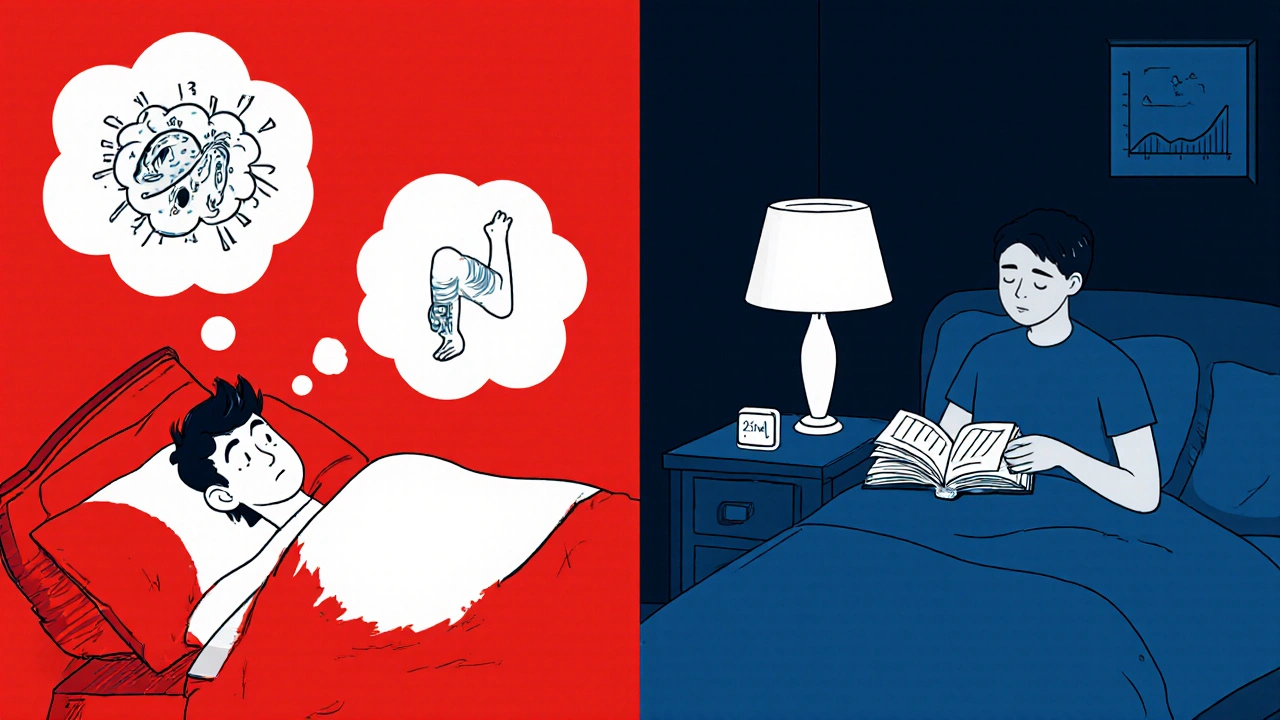
Who Should Avoid These Completely?
If you have sleep apnea, OTC sleep aids are a bad idea. They relax your throat muscles even more, which can block your airway and make breathing interruptions worse. That’s not just disruptive-it’s life-threatening.
Pregnant women? Avoid them. Diphenhydramine is labeled “Category B,” meaning no proven harm, but there’s also not enough data to say it’s safe. Melatonin? Almost no research exists on its effects during pregnancy. Why risk it?
People on other medications should be cautious too. Antihistamines can clash with antidepressants, blood pressure meds, and even some painkillers. Melatonin can interfere with diabetes drugs and blood thinners. If you’re taking anything regularly, talk to your doctor before adding a sleep aid.
How Long Is Too Long?
The labels say: don’t use for more than two weeks. That’s not a suggestion. That’s a warning.
Yet a 2022 survey found 38% of users go past that. Nearly 1 in 5 use them for over a month. Why? Because they think it’s harmless. Or because they’ve stopped sleeping without it.
That’s rebound insomnia. When you stop the pill, your brain doesn’t know how to sleep on its own anymore. Sleep gets worse than before you started. Studies show about 30% of people who use these aids for more than two weeks experience this.
And tolerance builds fast. If you take melatonin daily for more than 10 days, your body starts to adjust. You need more to get the same effect. That’s not normal. That’s your brain adapting to a chemical it wasn’t meant to rely on.
For melatonin, the European Food Safety Authority says 1mg is enough for most adults. Yet most bottles sell 3mg, 5mg, or 10mg. Why? Because people think more is better. It’s not. Higher doses don’t help you sleep longer-they just increase side effects.
What Should You Do Instead?
There’s a better way. Cognitive Behavioral Therapy for Insomnia, or CBT-I, is the gold standard. It’s not a pill. It’s a set of techniques that retrain your brain and habits around sleep.
Studies show CBT-I works for 70 to 80% of people. That’s better than any medication. And the results last. Unlike pills, you don’t need to keep taking it. You learn how to sleep on your own.
Simple changes help too. Cut screen time an hour before bed. Keep your room cool and dark. Get up at the same time every day-even on weekends. Avoid caffeine after 2 p.m. Don’t lie in bed awake for more than 20 minutes. Get up, go to another room, read under dim light, then come back.
These aren’t just tips. They’re science-backed tools that fix the root cause of insomnia: bad sleep habits and anxiety around sleep.
When to Use OTC Sleep Aids-And When to Walk Away
There’s a time and place for OTC sleep aids. If you’re flying across time zones and need to reset your clock, 0.5mg to 1mg of melatonin 30 minutes before bedtime might help. If you’ve had a stressful week and can’t shut your brain off, one dose of diphenhydramine might get you through the night.
But that’s it. One night. Two nights. Maybe three. No more than seven consecutive days. And never as a crutch.
If you’re still struggling after two weeks, don’t reach for another pill. Call your doctor. Ask about CBT-I. Get a sleep study if needed. Insomnia isn’t just about being tired. It’s often tied to stress, anxiety, depression, or an underlying health issue. Treating the symptom won’t fix the cause.
And if you’ve been using these for months? Don’t quit cold turkey. Talk to your doctor about how to taper off safely. Rebound insomnia is real-and it’s brutal.
OTC sleep aids aren’t evil. But they’re not harmless either. They’re a Band-Aid on a broken bone. You can use them for a day or two. But if you keep using them, you’re not healing. You’re just hiding the pain.
Frequently Asked Questions
Are OTC sleep aids safe for long-term use?
No. Long-term use of antihistamine-based sleep aids like diphenhydramine is linked to a higher risk of dementia and cognitive decline, especially in older adults. Melatonin, while not addictive, can cause daytime drowsiness, vivid dreams, and disrupt your natural sleep rhythm if taken nightly for more than a few weeks. Medical guidelines recommend using these only for short-term, occasional sleep problems-no more than 7 to 10 days in a row.
Can melatonin help with jet lag?
Yes, melatonin can help with jet lag, but only if used correctly. Take 0.5mg to 1mg about 30 minutes before your target bedtime at your destination, starting the day you travel. Higher doses (above 3mg) don’t help more-they just increase side effects like dizziness and headaches. It’s not a cure-all, but for occasional travel disruptions, it’s one of the safer OTC options.
Why do I feel groggy the next day after taking OTC sleep aids?
Antihistamines like diphenhydramine and doxylamine have long half-lives-they stay in your system for hours. Even if you sleep 8 hours, your brain is still processing the drug when you wake up. That’s why you feel foggy, sluggish, or uncoordinated. Melatonin can cause this too, especially if you take too much or take it too late. The solution? Use the lowest effective dose and avoid using it on days when you need to be alert.
Is it true that OTC sleep aids can make insomnia worse?
Yes. This is called rebound insomnia. When you stop taking the sleep aid after using it for more than two weeks, your body may struggle to fall asleep without it-even worse than before you started. About 30% of regular users experience this. It happens because your brain adapts to the drug and reduces its own natural sleep signals. The longer you use it, the harder it is to quit.
What’s the best alternative to OTC sleep aids?
Cognitive Behavioral Therapy for Insomnia (CBT-I) is the most effective, long-term solution. It’s not a pill-it’s a structured program that helps you change thoughts and habits that keep you awake. Studies show it works for 70-80% of people and the results last. Many online programs and therapists offer CBT-I. It’s often covered by insurance and doesn’t come with side effects.
Final Thought
You don’t need a prescription to buy a sleep aid. But you do need a reason to use one. If you’re taking it because you’re stressed, anxious, or stuck in a bad routine, the pill won’t fix that. It’ll just make you drowsy while the real problem keeps growing.
Real sleep isn’t something you can buy. It’s something you build-through routine, calm, and consistency. OTC sleep aids might give you a few good nights. But they won’t give you a lifetime of rest.

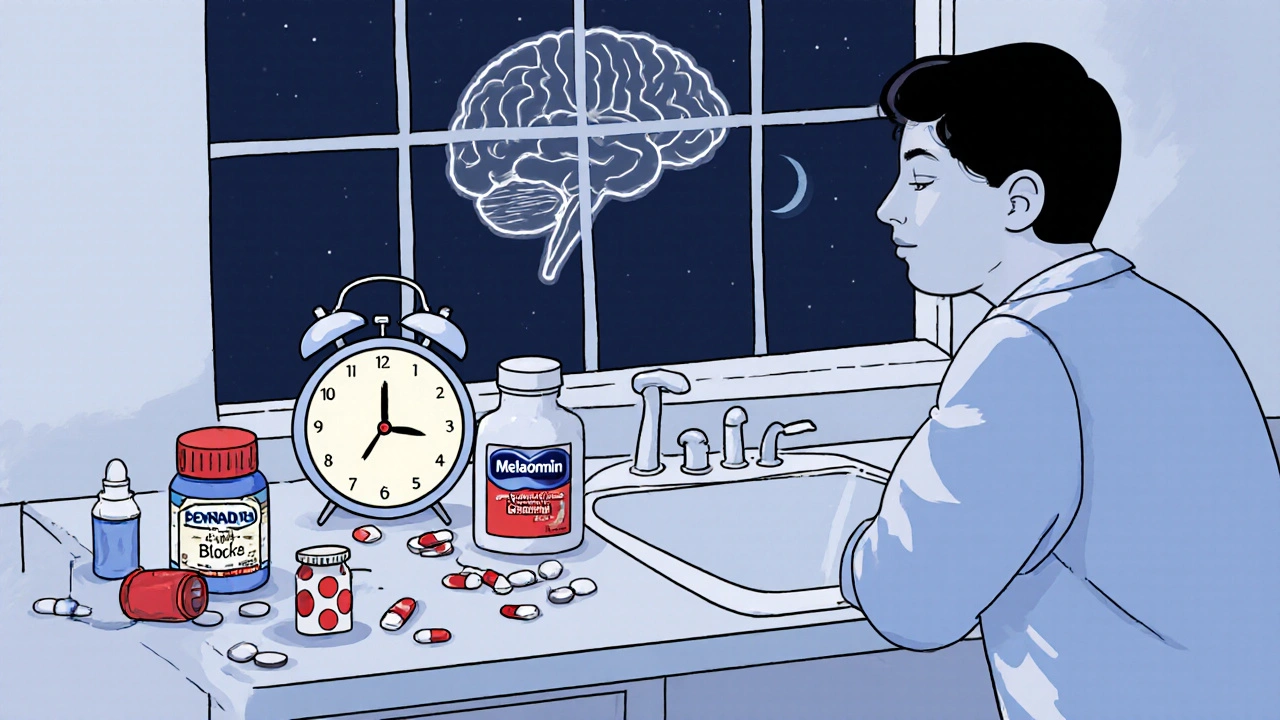
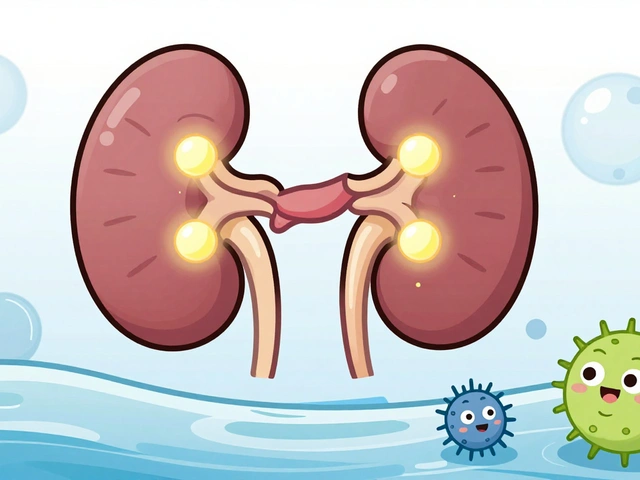

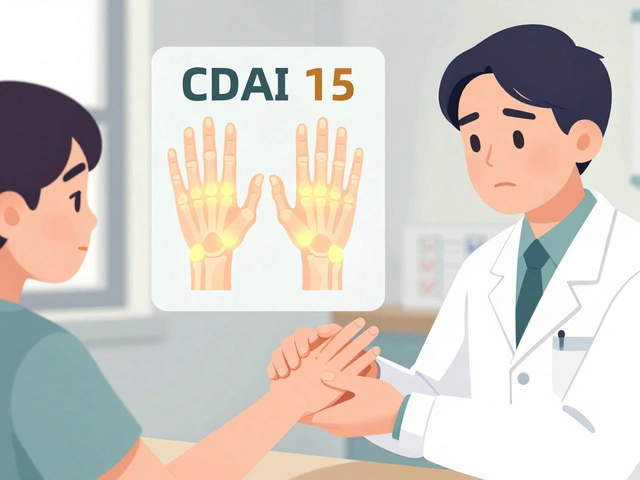
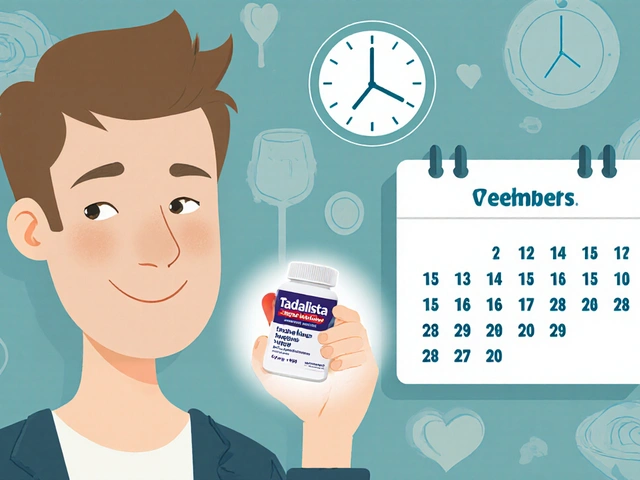
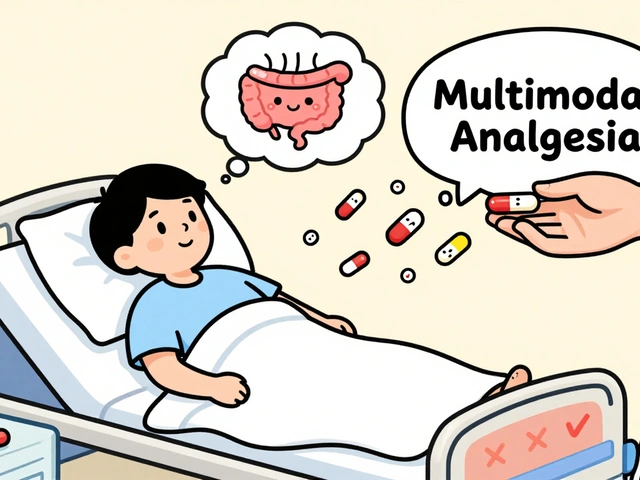
November 17, 2025 AT 15:05
Okay but let’s be real - if you’re taking diphenhydramine every night because your brain won’t shut off after doomscrolling until 2 a.m., you’re not sleeping, you’re just chemically sedating yourself into a coma that lasts until your alarm screams at you. And yeah, the dementia risk? Totally worth it if you finally get to forget your ex’s name for a few hours. I’ve been on this shit since college and I swear I’m still functional. My cat thinks I’m a robot now but hey, at least I’m a robot that sleeps.